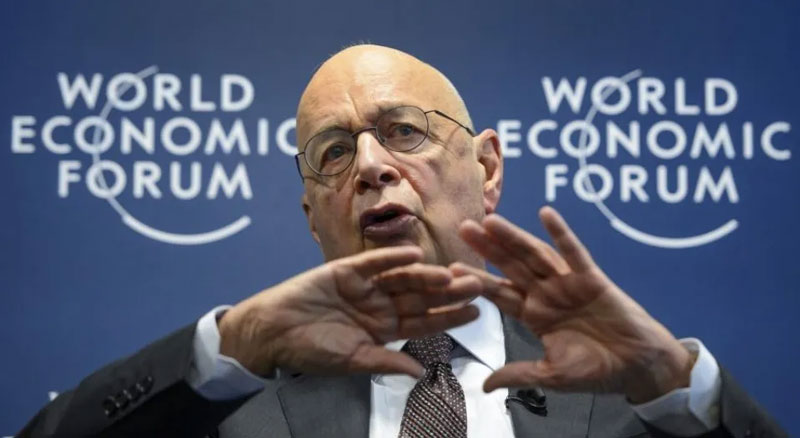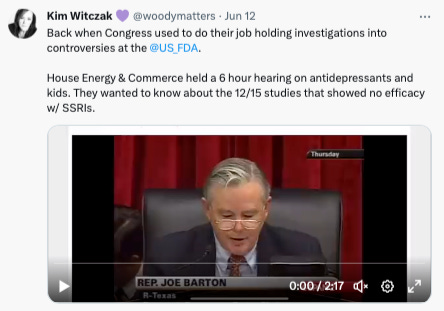Story at-a-glance
Jan Jekielek, senior editor with The Epoch Times and host of "American Thought Leaders," spoke with microbiologist Kevin McKernan — a former researcher and team leader for the MIT Human Genome project1 — about DNA contamination in COVID-19 shots.2
In a preprint study McKernan and colleagues assessed the nucleic acid composition of four expired vials of the Moderna and Pfizer mRNA shots. "DNA contamination that exceeds the European Medicines Agency (EMA) 330ng/mg requirement and the FDAs 10ng/dose requirements" was found.3
So, in addition to the spike protein and mRNA in COVID-19 shots, McKernan’s team also discovered simian virus 40 (SV40) promoters that, for decades, have been suspected of causing cancer in humans, including mesotheliomas, lymphomas and cancers of the brain and bone.4 The media were quick to "fact check" the finding, with the AP publishing a rebuttal titled, "No, ‘Monkey Virus DNA’ Was Not Found in COVID Vaccines.’"5
Speaking with Jekielek, McKernan took issue with the AP’s fact check article, noting their paper "never said that the entire virus was present in the vaccines. We said that the promoter and the enhancer and the origin was in there, along with the polyA signal. It seems as if the AP has erected a strawman argument where they are trying to debunk something that was never said."6
Could DNA Contamination in COVID Shots Cause Cancer?
The AP and other media outlets also downplayed the notion that DNA contamination in COVID-19 injections could contribute to cancer. "They are trying to make claims that this is not cancer-causing," McKernan says, but "there are limits on how much DNA can be in a vaccine precisely because of the concern over DNA integration."7
Such guidelines were based on research by the U.S. Food and Drug Administration’s molecular biologist Keith Peden,8 but when he evaluated how much DNA could "safely" exist in vaccines, he didn’t consider lipid nanoparticles (LNPs) and other factors that could enhance how much DNA could enter a cell. McKernan explains:9
"Here are two additional things going on that mean the DNA in these vaccines is more likely to get to the nucleus and integrate into the genome than the information they had at that time. When they came to those regulations, they were assuming the previous DNA in the shots were host cell DNA, like maybe you grew the vaccine in some type of monkey kidney cell.
As a result of this, there's background monkey DNA, or background human DNA, due to whatever host cell line they use. We have something very different going on here. We have a well-known promoter that's used in gene therapy that's inside the vaccines that's getting injected through an LNP that makes it very effective at transecting cells. Then it has a signal in there that drives that DNA into the nucleus.
I don't think Keith Peden had anticipated that when he came up with these 10 nanogram limits of DNA. I'd say the verdict is still out as to whether or not they can be cancer-causing, but the risk is certainly elevated from what the FDA's guidelines have been constructed off of."
How SV40 Promoters in COVID Shots Could Drive Disease
McKernan explains that in many cases, when tumors are sequenced, they’re found to contain sequences from SV40 and other viruses, which can integrate into your genome, causing disruptions and instability that can trigger the cell line to grow out of control.10
In the case of COVID-19 shots, he says, "The concern is if this DNA integrates the genome, one portion of the SSV40 sequence is an SV40 promoter, a very strong promoter, which means it drives transcription wherever it lands in the genome.
If this happens to drop itself in front of a proto-oncogene [a gene that has the potential to cause cancer] and drives a lot of expression off of a gene that's known, if you hyper-express it and turn the cell cancerous, then we have a concern that DNA is in fact doing that."11
But not only do COVID-19 shots contain SV40 promoters, they also contain a 72 base pair insertion that makes the promoter much more aggressive and also drives the sequence into the nucleus of the cell. "And they're right next to each other," McKernan says. "If this DNA moves into the nucleus and it drags a promoter with it, and that integrates in front of a gene, it can disrupt gene regulation and potentially lead to the oncogenesis."12
At the same time, a Pfizer trial showed that the shots may induce lymphocytopenia and neutropenia, or low concentrations of white blood cells. This could further allow for cancerous changes to proliferate. "After vaccination, patients have lower white blood cells, which you need to clear out cells that are misbehaving, like cancer cells," McKernan adds.13
He’s also seen research showing that the spike protein from COVID-19 shots can enter the nucleus and disrupt regulation of p53 and BRCA1 genes:14
"People are probably familiar with BRCA1 because of breast cancer genes, but p53 is also another guardian of the genome. These are genes that clean up genomes that have been broken or have integration events ...
If you have all three of those potentially increased integration risks happening, with white blood cell reduction and spike protein inhibiting the genes that are meant to clean up this type of problem, the combination of those things could certainly be tied to the rise in cancer that we're currently seeing."
COVID Shots’ Lipid Nanoparticles Could Also Be Toxic
Another concerning compound in COVID-19 shots are the lipid nanoparticles, or LPNs. Because natural mRNA is easily broken down, this means the gene therapy needs a special delivery system to make it to the body’s cells. Moderna and Pfizer used lipid nanoparticles that contain polyethylene glycol (PEG)15 for this purpose.
The mRNA is wrapped in lipid nanoparticles (LNPs) that carry it to your cells, and the LNPs are "PEGylated" — that is, chemically attached to PEG molecules to increase stability.16 In their corporate prospectus17 released in 2018 at the time of their stock market launch, Moderna acknowledged that their LNPs carried risks.18 Among them, Moderna stated:
- "Most of our investigational medicines are formulated and administered in an LNP which may lead to systemic side effects related to the components of the LNP which may not have ever been tested in humans."19
- "While we have continued to optimize our LNPs, there can be no assurance that our LNPs will not have undesired effects. Our LNPs could contribute, in whole or in part, to one or more of the following: immune reactions, infusion reactions, complement reactions, opsonation reactions, antibody reactions including IgA, IgM, IgE or IgG or some combination thereof, or reactions to the PEG from some lipids or PEG otherwise associated with the LNP."20
Meanwhile, the shot trials didn’t include a control to show what happens if you just expose people to LNPs without mRNA. McKernan says:21
"What happens to people in that case? We don't know the answer to that ... a year from now, there will be more of a scientific consensus that spike protein was a bad idea, and that maybe we should switch this to a different protein or maybe we should use this platform to hit RSV [respiratory syncytial virus] or flu. If we don't know the toxicity of the LNPs alone, that might be just as dangerous of an approach.
We really do need to understand if this transfection is a good way to fend off a respiratory virus. Many people have argued that this is a horrible way to thwart off a respiratory virus because you're building immunity in the wrong compartment of the body.
You really need immunity in the nasal mucosa, and you're not going to get very effective nasal mucosa immunity through injection. You take on all of these injection risks where you're sending LNPs through the entire body and it's not very targeted."
What Happens if Shot Particles Enter the Ovaries?
There are concerns that shot particles are traveling throughout the body with unknown effects. Pfizer’s biodistribution study, which was used to determine where the injected substances go in the body, showed the spike protein from the shots accumulated in "quite high concentrations" in the ovaries.22
A Japanese biodistribution study for Pfizer’s jab also found that vaccine particles move from the injection site to the blood, after which circulating spike proteins are free to travel throughout the body, including to the ovaries, liver, neurological tissues and other organs.23According to McKernan:24
"We know from the biodistribution study that some of these LNPs are getting to the ovaries, so that's a huge concern. If 1% of these LNPs get to the ovaries, there's 40 billion in each shot, we're getting down to 400 million that go to the ovaries. Now you're starting to really concern yourself.
If there's only 300,000 oocytes in each female, and there are 400 million LNPs down there, these numbers are worrisome. What are we doing to the germline in the future generation?"
Already, a study published in Obstetrics & Gynecology — and funded by the National Institute of Child Health and Human Development (NICHD) and the National Institutes of Health (NIH) Office of Research on Women's Health — confirmed an association between menstrual cycle length and COVID-19 shots.25
The implication is that the shots could be having an effect on fertility. As the Obstetrics & Gynecology researchers noted, "Menstrual cyclicity is an overt sign of health and fertility."26
‘There Is Residual DNA in Both Shots’
As for why the SV40 promoter and enhancer is in COVID-19 shots in the first place, it’s related to the plasmid growth medium, which is E. coli. McKernan explains:27
"It's [SV40 promoter] a common tool used in the biotech industry to drive very aggressive expression of a gene. In this case, Pfizer has it in front of a neomycin resistance gene, which drives resistance for neomycin. The reason they want it there is so that they can grow this plasmid in E. coli.
E. coli doubles every 30 minutes, so you can grow E. coli overnight and get gobs of this DNA. You then have to purify it from E. coli to make RNA out of it.
There is some risk that if you don't fully purify it from E. coli, you can leave behind what's known as endotoxin or lipopolysaccharides, usually abbreviated as LPS. This is an additional risk that Pfizer took on. Moderna's doing a very similar thing, although they don't have SV40 in there. They are using E. coli to amplify their plasmid DNA, and it comes with some of this risk.
What we do know is there is residual DNA in both shots, and this DNA is either right above the regulatory limit or tenfold higher ... When looking at RNA to DNA ratios, it's even worse. The actual outcome is that there is more like a 17- to 80-fold gap from what is required in the regulations, as best we can tell."
According to McKernan, Pfizer also used two different tools to measure RNA versus DNA. This allowed them to "cook the books," inflating the amount of RNA and depressing the amount of DNA so "they can squeak through these regulatory requirements without anyone really understanding what's going on."28 Further, Pfizer didn’t disclose its SV40 information to the European Medicines Agency, which McKernan believes was intentional:29
"They did that because they know the SV40 region is a very controversial base in its history in the vaccine field. The polio vaccines were contaminated with the full virus, not just these little components, but the full virus.
The full virus has over 5,000 bases. The components we have are about 466 bases of the virus, but they're arguably the most functional aspects of the virus's genome for replicating and for gene expression. The fact that they hid that this is in there from the EMA is a concern."
While McKernan and colleagues continue to spread the word about SV40 promotor and components in COVID-19 shots, the media continues to try to discredit their findings. McKernan points out again that they never stated the SV40 virus is in the shots — but that doesn’t make their study any less worrisome:30
"We said there was an SV40 promoter and some of the components. We were very clear about that, but it quickly got associated with, ‘These guys are claiming there's something there that isn't there.’ Then everyone missed the point that there are components of SV40 that are actually quite functional that we need to be concerned about.
They are in these vaccines because they've been studied as being gene therapy tools ... They are perhaps not as frightening as what happened in the polio vaccine, which some people have attributed to causing some cancers in the past. It's still a controversy in that field, but there's still things that we need to know about.
... There does seem to be a tendency for them [media] to either erect a strawman, or flood the zone with alternate information, so that an average person is just confused on what to believe, because there's a mixture of messages coming through the media that are meant to drown out the real signal."
https://rumble.com/embed/v3c905g/?pub=bomif




